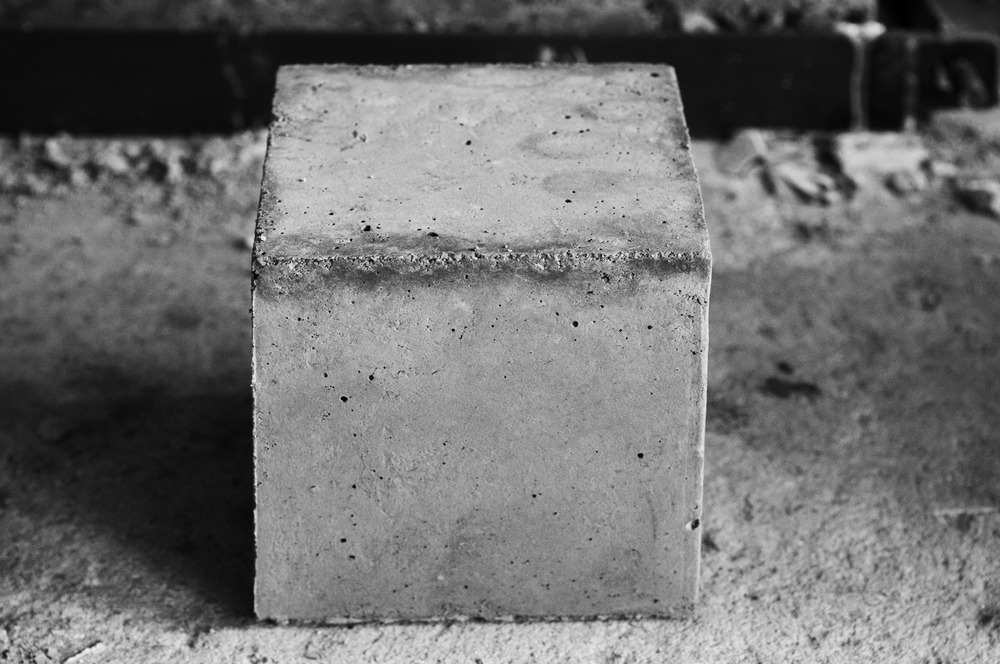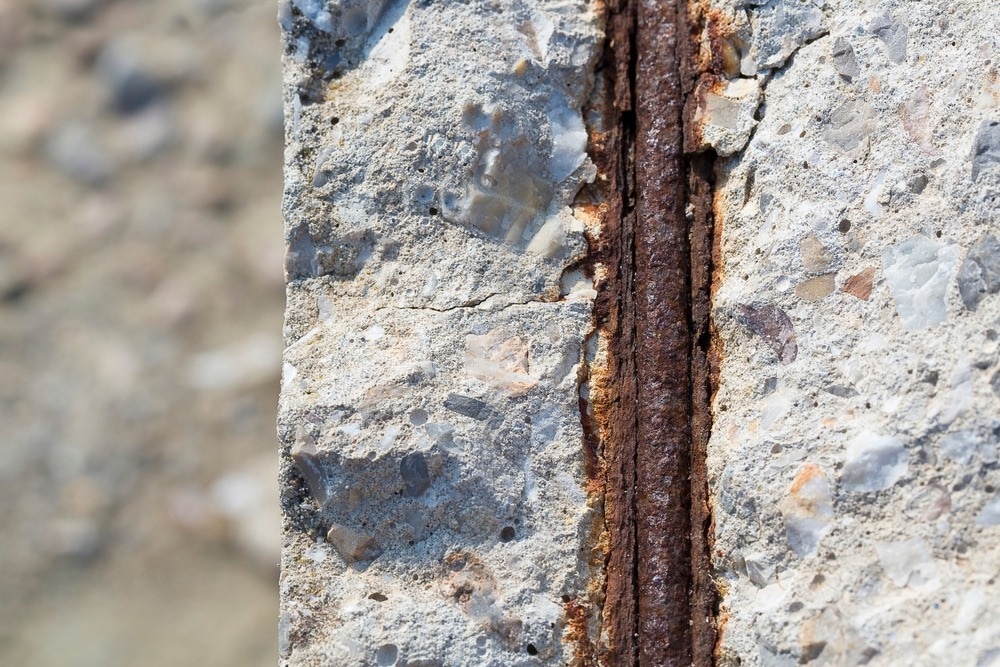The evolution of building materials and improvements in construction techniques have played a key role in technological advancements and scientific progression over the centuries. The very first building materials utilized can be traced back to 400 BC and are still used in modern construction. This article discusses the changes in the properties of construction materials over time and the latest research on aging resistance.

Image Credit: PixHound/Shutterstock.com
Major Changes in Construction Materials Over Time
Concrete
Due to its strength, longevity, reflectivity, and adaptability, concrete is a commonly utilized material for a variety of construction applications. As long as moisture and an ideal temperature are maintained for the hydration of cement, concrete strength improves over time. Over the years, there is an increase in the compressive strength of concrete, with a considerable increase in the elastic modulus too.
This was proven by research published by the University of Kansas Center of Research. Three distinct compositions were employed in the study consisting of 100% Portland cement, 65% Portland cement, 35% slag cement, or 60% Portland cement, 25% slag cement, and 15% Class C fly ash. All of the cement compositions saw a considerable increase in their compressive strengths as the days passed.
Wood
Wood as a building material is susceptible to surface abrasion or photocatalytic degradation as time passes. It is a reaction that culminates in the dissolution of the wood cell wall and decreases its strength over time, making it softer.
Multiple forms of deterioration are brought on by prolonged exposure to weathering heat and moisture, notably the cracking and fracturing of wood as well as a detachment at the glue line of reinforced wooden products. The deterioration of wood is unavoidable, but proper care and polishing help to increase the lifetime of wooden materials.
Steel
The high-rise structure was a revolutionary invention at the beginning of the 20th century, and steel was a crucial component of these enormous constructions. Although the strength and durability of steel are its major advantages, the problem of corrosion over time has been a major concern. Corrosion causes steel buried in concrete to lose its ideal tensile characteristics and produce oxide 2 to 4 times the volume of the original steel.

Image Credit: Francesco Scatena/Shutterstock.com
Owing to these problems, a replacement with comparable strength is required, and polymeric materials are increasingly being used to replace steel.
Polymeric Materials
Plastics and polymers have been used as construction materials more frequently in recent decades as a replacement for steel. Thousands of commercially accessible polymers allow for the development of novel applications.
Glass Fiber Reinforced Polymer (GFRP), sometimes referred to as fiberglass rebar, is a fantastic way to eliminate the possibility of corrosion in construction structures. This is a substitute material for steel in the building sector. The benefits of GFRP include being more durable than steel itself, corrosion-free, lightweight, and having an extended life span.
The volume of the polymer decreases over time, slowing the movement of the polymeric molecules. As a result, aging is a self-defeating process. The brittleness of polymeric substances increases with time, along with the stiffness and tensile strength. As time passes, the impact strength of the polymers decreases, which means a high impact force can lead to failure. This is why much research is being done to modify polymers to enhance their commercialization as a construction material.
Nanoparticles for Material Aging-Resistance
The latest study published in the journal Construction and Building Materials discusses the use of CeO2 nanoparticles as aging-resistant fillers. The researchers incorporated CeO2 nanoparticles in asphalt to extend its service life. The optical properties of CeO2 nanoparticles and layered double hydroxide (LDHs) crystals were investigated.
According to the findings, CeO2 nanoparticles primarily captured ultraviolet light, whereas LDHs primarily reflected ultraviolet light. Integrating CeO2 nanoparticles into asphalt increased its viscosity and flexural modulus, as well as its anti-aging capacity, particularly for anti-ultraviolet aging. The strength of asphalt did not reduce drastically over time after the incorporation of CeO2, which proved the use of CeO2 as an anti-aging filler in asphalt for construction purposes.
What Does the Future Hold for Building Materials?
Environmentally sustainable smart building materials are the future of the construction industry. There has been an increasing interest in ecologically friendly construction materials that provide better sustainability as well as pave the way for self-sustaining and earthquake-resistant structures. To that end, a variety of novel solutions have been proposed in recent years, including osmotic concrete, transparent cement, and even cardboard for buildings.
As per the latest research published in the 2021 International Conference on Social Development and Media Communication (SDMC 2021), smart materials are widely classified into two types based on their functional properties. The first category is sensing materials, which can detect the strength of environmental stimuli such as heat, light, stresses, etc. Actuating materials, on the other hand, respond to variations in operating circumstances or internal states.
These materials include piezoelectric materials, shape memory alloys, carbon fiber reinforced concrete (CFRC), etc., which are used in a variety of architectural applications.
In summary, new "intelligent" materials and other technologies are making buildings sustainable, stronger, and more energy efficient than ever before.
More from AZoBuild: Exploring Circular Principles with a Waste-Based Dome
References and Further Reading
Zhu, S. (2022). Study on Smart Materials Using in Civil Engineering. 2021 International Conference on Social Development and Media Communication (SDMC 2021). 1462-1466). Atlantis Press. Available at: https://doi.org/10.2991/assehr.k.220105.269
Joe, (2020). A Brief History of Building Materials-Structural Engineering. [Online]
Available at: https://mperryassociates.com/blog/brief-history-building-materials/
Moore, C., (2020). How Building Materials Change Over Time. [Online] Available at: https://ccsconcretedriveways.com/
O’Reilly, M. et. al. (2017). Variation of Concrete Strength, Permeability, and Porosity due to Specimen Type, Season, and Age. University of Kansas Center for Research, Inc..
Zhao, Z. et. al. (2022). Feasibility assessment of CeO2 nanoparticles as aging-resistant agent of asphalt. Construction and Building Materials. 330. 127245. Available at: https://doi.org/10.1016/j.conbuildmat.2022.127245
Prasad, (2022). Building Materials – types and application in construction. [Online]
Available at: https://www.structuralguide.com/building-materials/
We Build Value, (2021). Building Materials: An Amazing, Ever-evolving Story. [Online]
Available at: https://www.webuildvalue.com/en/infrastructure-news/building-materials-history.html
Disclaimer: The views expressed here are those of the author expressed in their private capacity and do not necessarily represent the views of AZoM.com Limited T/A AZoNetwork the owner and operator of this website. This disclaimer forms part of the Terms and conditions of use of this website.